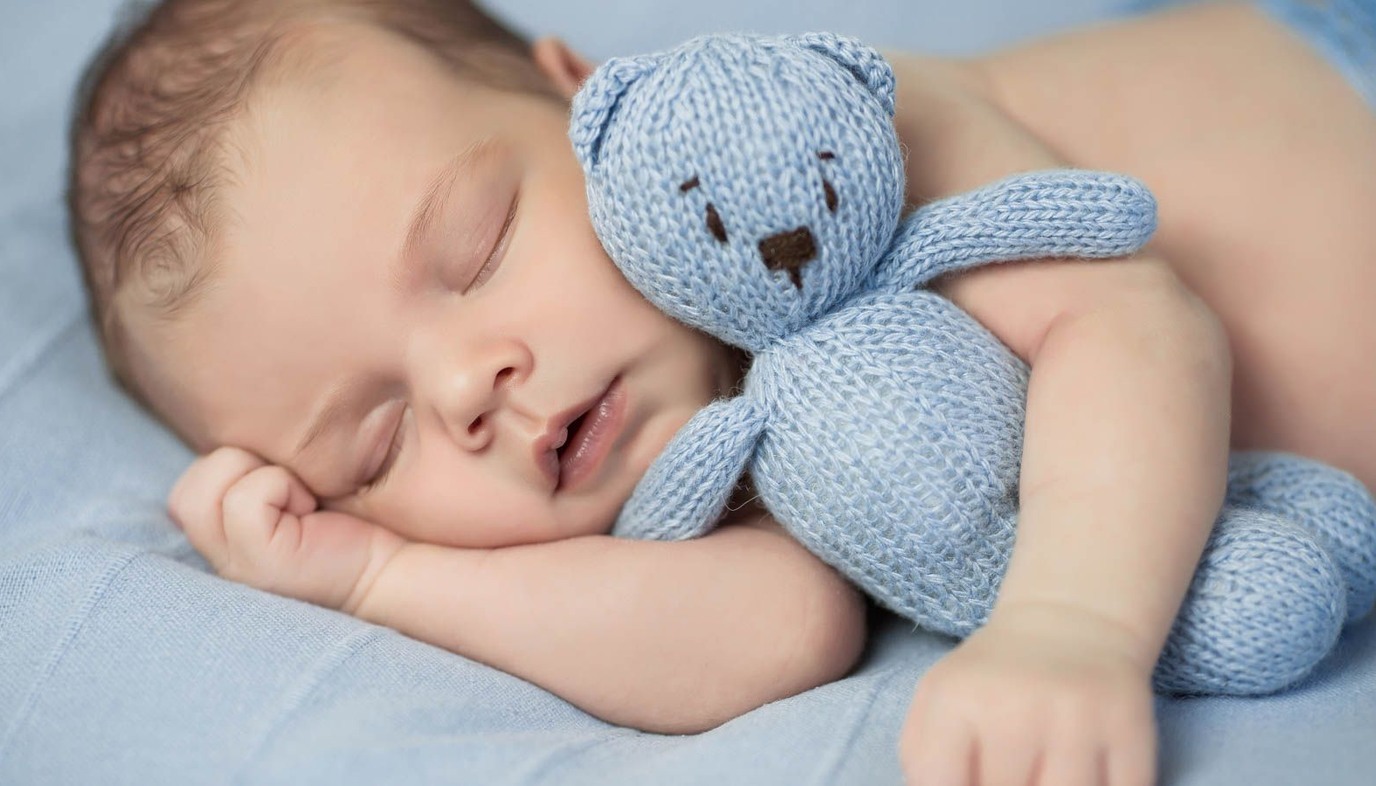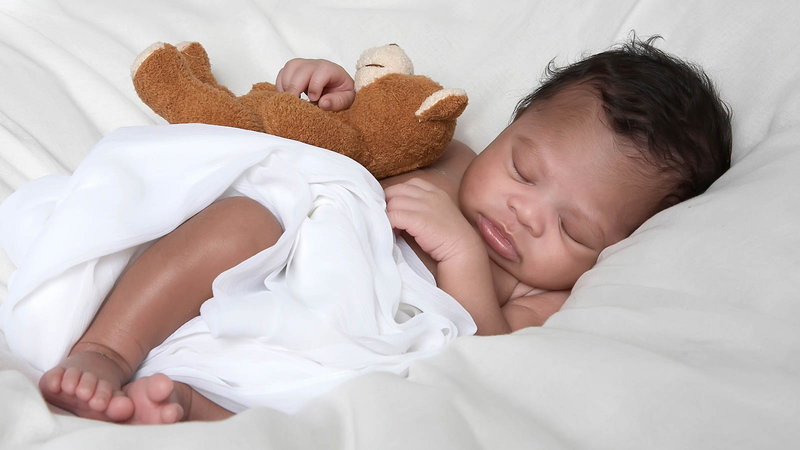
If your baby was a full-term baby, she will start this month weighing anywhere from 5 and a half pounds to nine or ten pounds. And, she will be around 18 to 22 inches long. The average newborn weighs around 7 and a half pounds and is about 20 inches long.
Most newborns gain about 4-7 oz per week. Breastfed babies tend to gain weight a little slower than formula-fed babies. Your baby may not gain weight right away though. It is normal for newborns to lose up to 10% of their birth weight, but they should gain this weight back by the time they are two weeks old. Your baby may go through a couple of growth spurts this month, around 7 days and 3 weeks. You may notice your baby acting fussier during this time.
During the first month, your newborn should be producing plenty of wet and dirty diapers, at least 5 or 6 wet diapers and 2 or 3 dirty diapers a day. This will change as she gets older and formula-fed babies may have fewer bowel movements.

Your baby’s beautiful face may be covered with unattractive bumps that look like acne. Newborns may be born with tiny little white bumps called milia. This is normal and will disappear by the time your baby is one month old. Baby acne, which is similar, is also common in newborns. It may not be the best for photo ops but it will go away on its own and it isn’t something to worry about.
Your baby spends most of her time sleeping. Newborns spend about 16-17 hours a day sleeping. You can encourage your baby to sleep better at night by playing with her and feeding her frequently during the day. At night, keep the room dark and avoid any stimulation. However, at this age, she will need to wake frequently to eat, and should not be allowed to sleep for longer than four hours without waking her to eat.
By the End of the First Month Your Baby Can:
- Grasp your finger if placed in her palm
- Lift her head for a moment when lying on her tummy
- Turn her head from side to side while she is lying on her back
- Root and suck
- Respond to noises
- See objects that are 8-15 inches away
- Stare at mommy or daddy’s face
- Cry when she is unhappy or needs something from you
- See black or white patterns
Your Baby Likes:
- To sleep.
- To suck during breastfeeding or bottle feeding, on a pacifier, her thumbs and fingers, on anything really.
- To look at mommy or daddy.
- To be cuddled and held.
Safety Tips:
- Always put your baby to sleep on her back.
- Make sure your baby’s car seat is tightly secured, rear facing, and in the back seat.
- Do not heat your baby’s bottles in the microwave. This can cause scolding and burns inside your baby’s mouth and throat.
- Do not drink hot liquids while holding your baby.
- Do not leave your baby alone on a changing table or bed.
- Make sure your crib is safe. Mattresses should be firm and there should be no more than 2 3/8 inches between the crib slats.
Activities for Your Baby:
- Flip through a black and white or black and red board book. This is great for stimulating baby’s vision.
- Shake a bright colored rattle in front of your baby. Let her practice listening to the rattle’s sounds. Try shaking the rattle on either side of her. See if she follows the sound or tracks the rattle with her eyes.
- Sing a lullaby to your baby.

